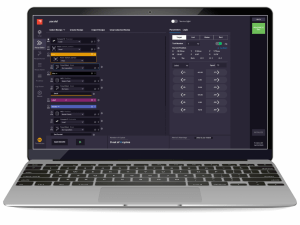Bright Machines Aims to Bring New Value to Machines and Humans
By Abhishek Pani, SVP Product Management, Bright Machines

Abhishek Pani, SVP Product Management, Bright Machines
Over the last several years, many statements have been made around artificial intelligence and robotics that have prompted sensational headlines about the imminent danger of robots taking over our jobs and posing a fundamental risk to the existence of human civilization. While such claims evoke drama and get people talking, we are nowhere close to this imagined future. The more realistic near-term outlook looks a lot less scary: humans and machines working together, side-by-side, for the betterment of industry and society. In fact, McKinsey found that only 5% of occupations could be fully automated by currently demonstrated technologies; the more probable scenario, they claim, is that most occupations will have portions of their activities automated: “This means that most workers—from welders to mortgage brokers to CEOs—will work alongside rapidly evolving machines.”
At Bright Machines, we believe technology like our software-driven microfactories have a powerful role in augmenting and optimizing the human workforce in manufacturing. By enabling higher order automation-driven processes and tasks, microfactories reallocate human resources and allow them to transition to more meaningful factory roles. It’s predicted that up to 133 million new roles may emerge as companies embrace automation solutions like ours. Right now, this is more critical than ever as the pandemic has put new constraints on human labor – closing down factories, limiting site visits and requiring physical distancing between those individuals working the factory floor, while also forcing companies to make operational decisions in a period of demand uncertainties. As pressures continue to mount, it’s imperative that the humans working in manufacturing roles are given the tools they need to be operating at their best.
Yesterday we announced new features to microfactories that equip manufacturers with the tools they need to be both informed and efficient as well as help them manage pandemic specific risks and future-proof against such unforeseen outlier events.
 The new product features, supported with remote management functionality, help with fast deployment, re-deployment and management of automation solutions deployed on the production line at global scale. This performance scale-up from the deployment phase of the automation project to managing steady-state production is achieved through a combination of:
The new product features, supported with remote management functionality, help with fast deployment, re-deployment and management of automation solutions deployed on the production line at global scale. This performance scale-up from the deployment phase of the automation project to managing steady-state production is achieved through a combination of:
- Low/no-code recipe creation interface with in-built support for advanced logical constructs
- Out-of-the-box deployment of a semantic data model with extensibility, hybrid cloud and edge infrastructure to effectively log machine and product parameters along with product traceability in the assembly process
- Ability to easily create customized analytics dashboards, alerts and trigger-based notifications for process and line management
- Workflows and APIs to easily integrate 3rd party devices into any automation project
As it turns out, what’s good for humans is really good for production – especially through times of disruption. These new features contribute to scalable and resilient production capacity: quick and efficient automation deployment, diagnosis of issues, and line repurposing for product pivots.
We so often pit humans vs. machines, but the two don’t have to be mutually exclusive. Both can be improved for the benefit of the other. This is the more realistic future and one we’re happy to take part in shaping.












